| HOME |
|---|
SEXTANS
The Sextant
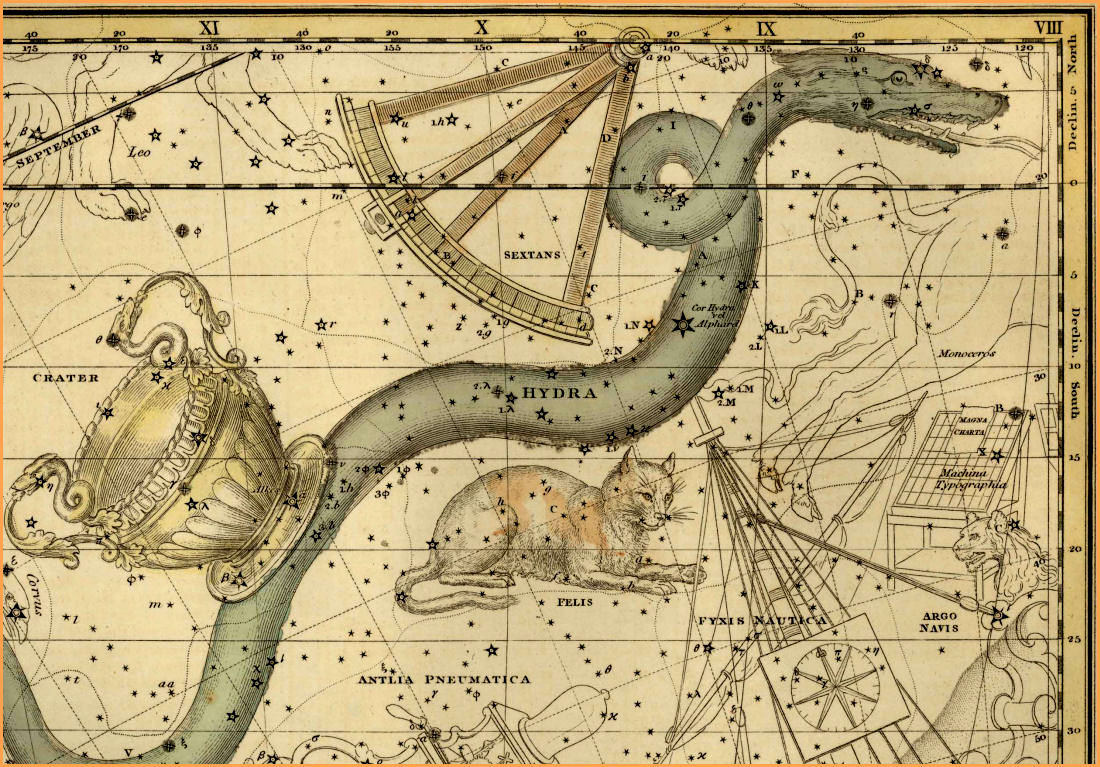
Sextans - Celestial Atlas by Alexander Jamieson - 1822
| HOME |
|---|

Sextans is one of the seven constellations contributed by the great seventeenth century Polish astronomer, Johannes Hevelius. At a time when the first telescopes were crude and unreliable, the astronomer's most important tool was the "Sextans Uraniae", the astronomical sextant. It was essential for measuring the precise positions of celestial objects, a critical task for sailors of the day as well, and no ship left port without one. So when Hevelius saw the familiar shape of a sextant's curved triangle up there in the stars, it was only proper for him to pay homage to it.
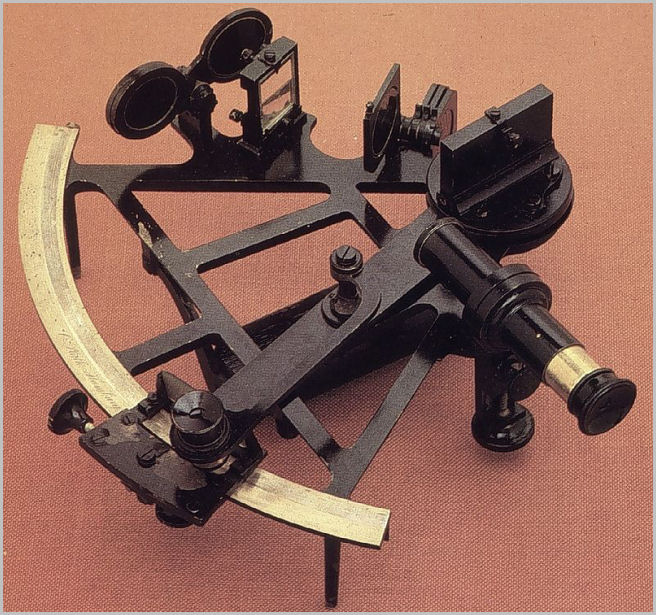
Sextans may very well be the faintest constellation in the sky. At first glance there doesn't seem to be anything there at all. But if the night is dark enough, and your pupils are sufficiently dilated, and you look carefully enough, you will eventually see what Hevelius saw: the very faint outline of a large triangle with a curved base - the undeniable shape of the classic sextant. And you will have a renewed appreciation for the man known as "the last of the great naked eye astronomers."
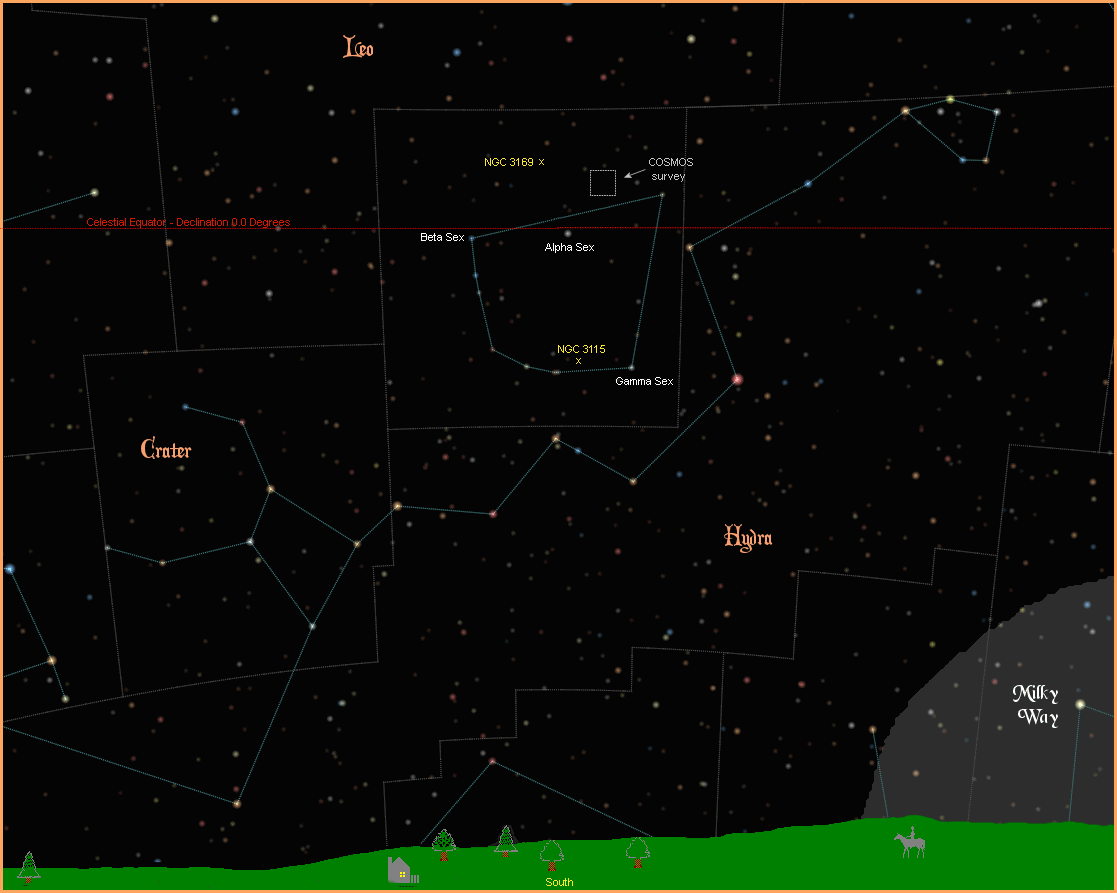
There are no named stars in Sextans, and Alpha Sextanius, with a magnitude of only 4.49, is the brightest. Located 283 light years away, just below the Celestial Equator, it is a B9III blue/white giant.
At one end of the sextant's curved base is Beta Sextanius, taking us down to magnitude 5.08, making it visible only on a good dark night. At a distance of 402 light years, it is a B5V blue main sequence star.
At the other end of the sextant's curved base is Gamma Sextanius, another dim star at magnitude 5.07. It is a binary system of two A1 blue/white main sequence stars, with a third distant, faint companion, all located about 276 light years away.
So far seven planets have been discovered in Sextans orbiting five stars. Unfortunately these stars are all beyond naked eye visibility, and the planets are all very large gas giants. For more information on these and other extrasolar planets, visit NASA's New Worlds Atlas, and The Open Exoplanets Catalogue.
Although the lack of bright objects in Sextans is frustrating for small telescope owners, it provides an opportunity for the largest telescopes to peer out into intergalactic space with a minimum of interfering light from nearby stars. And since Sextans also sits squarely on the Celestial Equator, making it accessible to telescopes world wide, it was chosen for the site of one of the most extensive deep field surveys ever conducted. The project was COSMOS: The Cosmic Evolution Survey, a study started in 2003 in which virtually all the large telescopes on Earth and in Space went to work analysing a two degree square of space in all electromagnetic wavelengths from X-rays to radio waves.
The ESO telescopes in the Andean mountain tops of Chile captured a 55 hour time exposure of the COSMOS field in the infrared spectrum. Below is a sampling of the 200,000 galaxies they discovered.
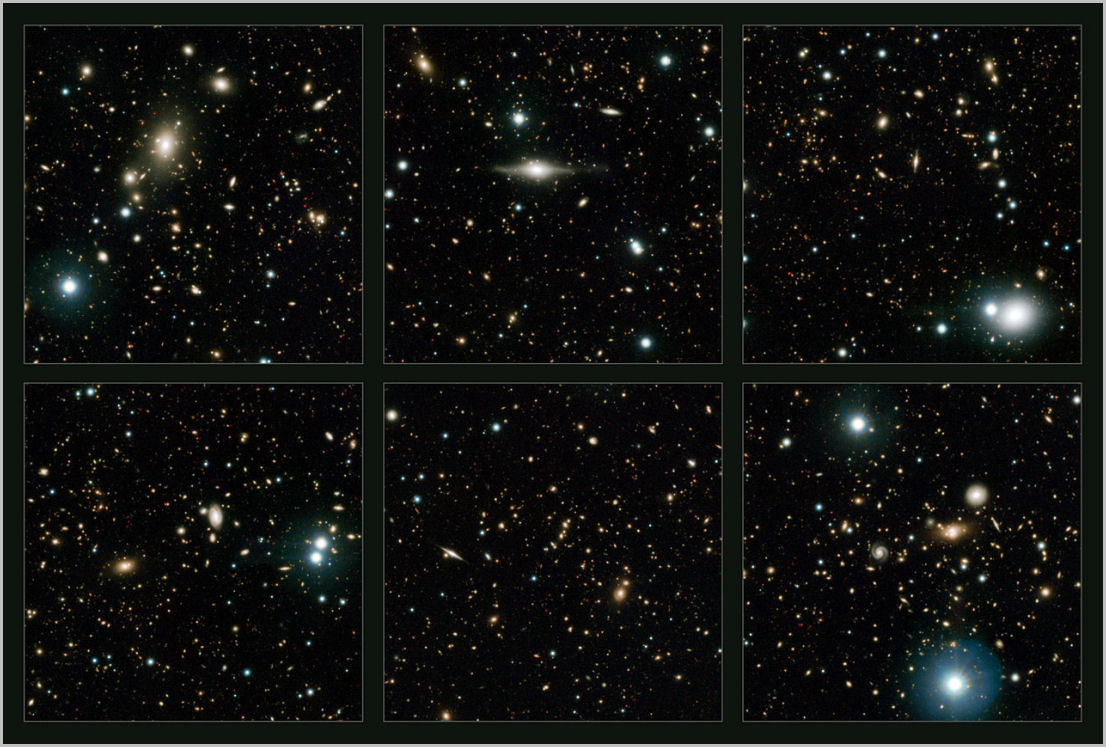
The COSMOS survey area was large enough, and the data sufficient enough for the Hubble Telescope team to put together the first detailed 3D map of some of the mysterious, invisible dark matter that composes 80 percent of the mass of the Universe, and provides the cosmological framework for the atoms of "normal matter" to cling to, and form galaxies.
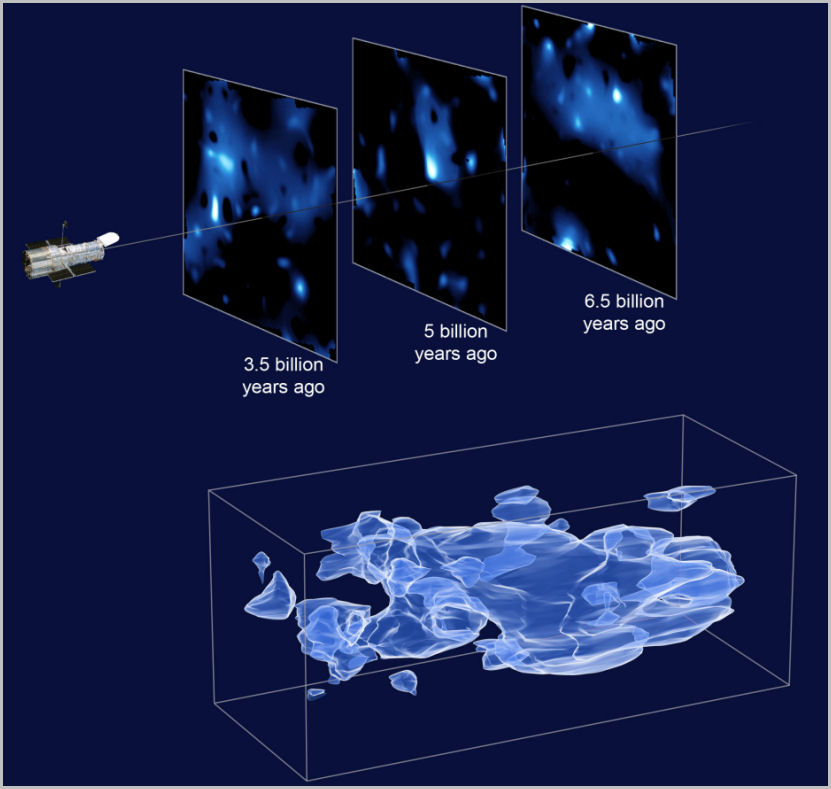
Outside the COSMOS survey area is the spiral galaxy NGC 3115, one of two galaxies known as the Spindle Galaxy. It is a bright lenticular galaxy seen almost edge on, with a magnitude of 8.9, located about 32 million light years away. At the centre of the galaxy is a supermassive black hole, approximately one billion times as massive as our Sun.
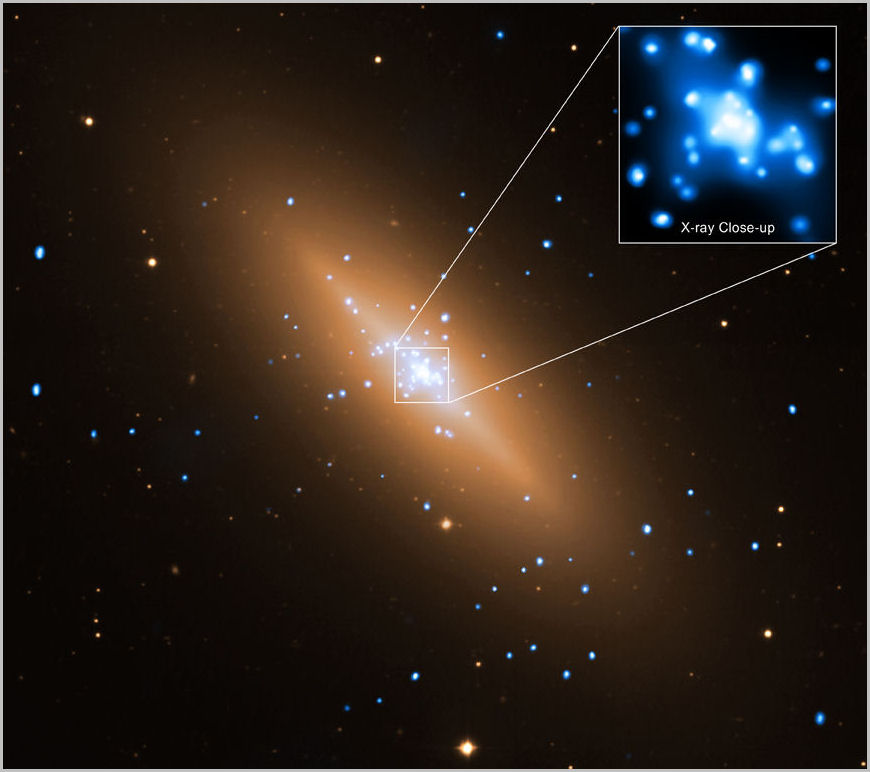
At a distance of about 70 million light years are three interacting galaxies: NGC 3165 (bottom right corner of image), NGC 3166 (right centre), and NGC 3169 (left centre). Thought to be separated by only about 50,000 light years, the intense gravity wells of these galaxies are starting to distort each others spiral structure, leading to their inevitable merger in the future. The grouping is faint, at magnitude 13.9.
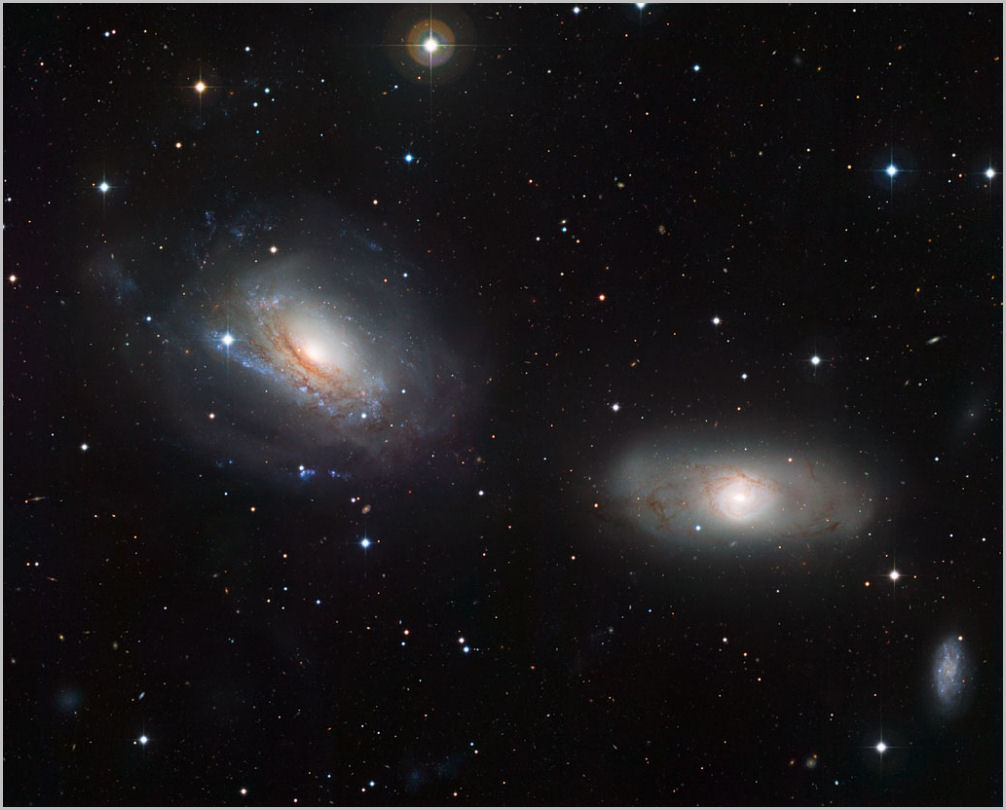
|
|
|
|
|
|